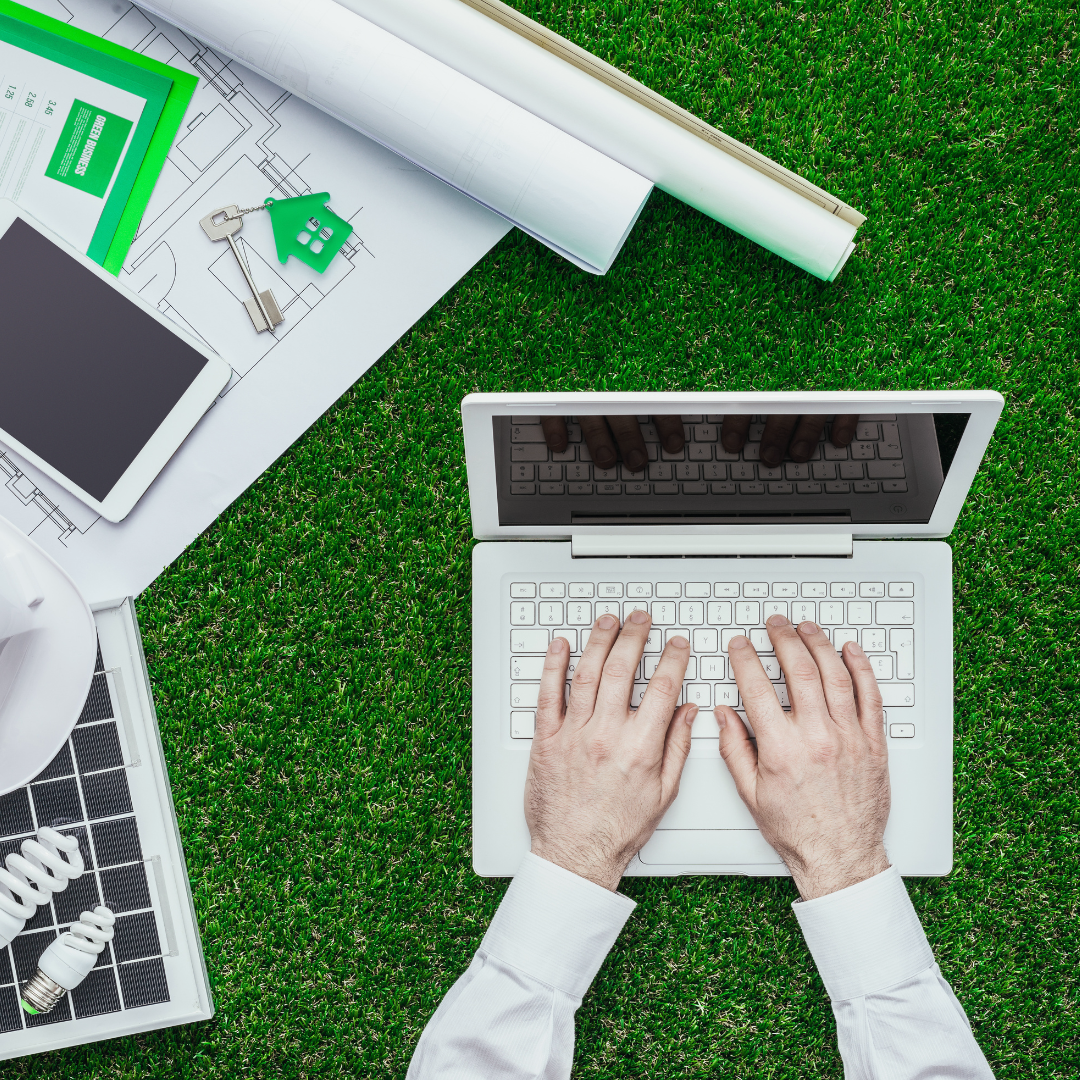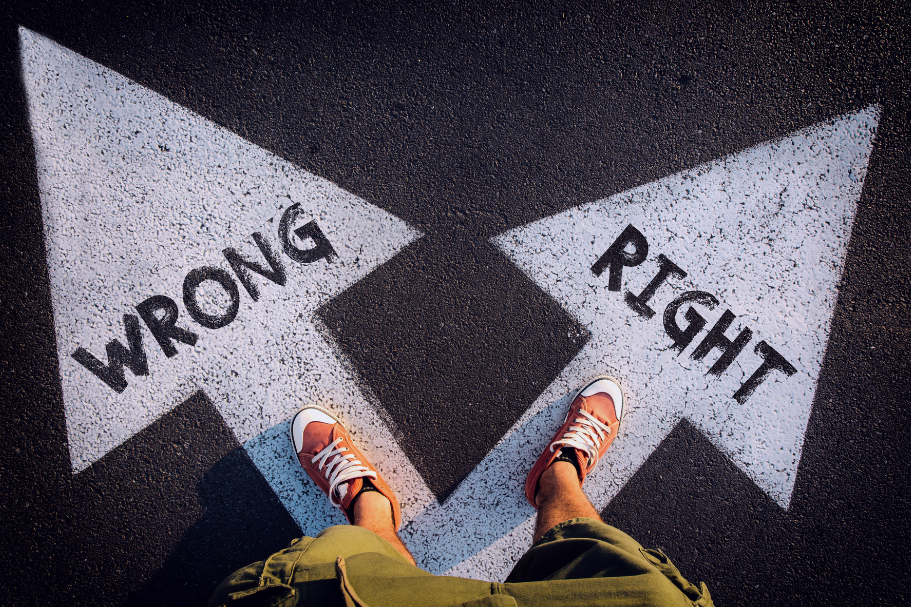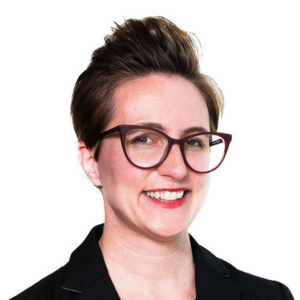How to talk about sustainability when the vibes feel off
Talking about sustainability in today’s climate can be challenging. Our Director for the Built Environment, Ren DeCherney, explores how to reframe the narrative, stay resilient, and continue driving meaningful impact–even when the momentum feels uncertain.

This blog post was written by Ren DeCherney, Director for the Built Environment at the Cradle to Cradle Products Innovation Institute. A leading voice in sustainable design, Ren brings deep expertise and fresh insight into how we can make meaningful impact–even when the vibes feel off.
Let’s be real – talking about sustainability right now feels really tricky. With budgets tightening, priorities shifting, and a fair amount of skepticism in the air, it’s easy to wonder, Should I even say the word “sustainability” anymore? If you’ve been feeling this, you’re not alone.
To unpack these challenges and explore how to navigate sustainability messaging in today’s climate, Ren DeCherney sat down with Holly Holton, a certified Gallup Strengths Coach with a background in corporate sustainability.
Ren offered insights and strategies drawn from her experience as a designer and her work with manufacturers advancing innovation through the Cradle to Cradle Certified® program. Holly contributed guidance on building individual and team capacity through professional development, shaped by her experience as both a sustainability leader and a coach.
Together, they explored why the conversation feels tougher, how professionals can reframe their approach, and how to continue making an impact no matter what the external climate may be.
If you’re ready to make an impact, no matter how the vibes feel, here’s what you can do:

Why sustainability feels harder right now
The business landscape is shifting, and sustainability in all shapes and forms is now facing more scrutiny, especially in the US market. Companies are crunching numbers, investors are looking for quick returns, and some people are wondering if prioritizing sustainability still makes sense.
“There’s a sense that people want to do the right thing, but they’re also worried about how it affects their bottom line,” Holly pointed out.
Ren added “it’s not just about money, it’s about burnout. People are wondering if what they’re doing even makes a difference.”
Sound familiar? The good news: There’s a way forward.
Focus on client goals and reframe the conversation
If sustainability talk is getting pushback our advice is to reframe the conversation. We heard someone in the industry recently say “we’re changing the words, not the strategy.” Instead of leading with sustainability goals, try focusing on things that resonate with your audience.
This starts with understanding your client and their goals for the project. Just like designers listen to client goals and turn it into compelling concepts and space planning, ask your client questions to understand what their needs are, what problems or challenges this project is trying to solve, what their priorities are as a company. From there, you can frame sustainability in the terms that resonate with them.
Here are some examples of how this can look when you encounter real life roadblocks (that we have all faced at some time!):
Focus on benefits, not buzzwords: For the C-suite or leadership, sustainability isn’t about being ‘green’–it’s about future-proofing their business and avoiding regulatory headaches. Cradle to Cradle Certified®, a multi-attribute and 3rd party verified program is a measurable pathway of innovation and sustainability optimization, giving you many entry points of specific benefits that you can frame conversations with leadership teams around. Are they concerned about rising energy costs? Decarbonization is a great way to reduce those costs long-term. Are they looking at de-risking their supply chain? Looking at material health and social fairness are great places to start in terms of evaluating risk throughout a supply chain.
Use different words: For example instead of saying “material transparency” or “healthy materials” you can advocate for creating spaces that feel good and create great customer experiences by using materials that don’t off gas and improve indoor air quality. Maybe even cite some studies showing people are more productive and happier in these spaces.
When they say it’s too expensive: Is it though? Talk about the long term costs, maintenance costs, and durability of materials if you’re a designer. If you’re in a corporate role, talk about long term financial gains by reducing risk in your supply chain and staying ahead of upcoming regulations.
Do it anyway, you just don’t have to say anything about it: Sometimes the most effective thing to do in times like this is just doing whatever you can and not mentioning it! For example, Ren mentioned adding a Red List Free paint into her firms base spec without telling anyone. Holly mentioned times when she presented options to leadership and every option met baseline sustainability criteria so she didn’t even have to make the argument to choose a sustainable option. If you are in a place where you can’t even bring it up, there might be ways for you to implement small impacts without having to ask permission or focus on it.

What you can do for yourself right now
In uncertain and chaotic times (like right now!), humans naturally crave safety and certainty, but when those feel out of reach, the best thing we can do is focus on ourselves. That doesn’t mean forced optimism–it means building resilience, creativity, calm, and hope by developing self-awareness. Understanding our habits, beliefs, and subconscious programming helps us direct our energy and attention in ways that serve us. By becoming more aware of our inner critic and shifting our focus, we can navigate uncertainty with greater confidence and clarity.
Here are some great ways to do that, at all levels in your career:
For yourself: Finding a support system and holding onto hope comes from being together and focusing on things we can directly effect. Cultivate resilience by paying attention to your own attention–where are you focused? Instead of doomscrolling, find small things in a day that you can do that help regain your focus–get your body moving, text or call a friend, do a crossword puzzle or read a book. All of these strategies have been proven to help you feel better, more focused, and more resilient.
As a team leader: As a team leader, you have a huge influence on how your people show up. Gallup research shows that up to 70% of an employee’s engagement comes from their direct manager–not the company or its mission, but you. In a world struggling with loneliness, anxiety, and burnout, your leadership can give your team hope and direction. The key is knowing yourself, your strengths, your weaknesses, so you can lead with awareness and impact.
Gallup’s 2025 Global Leadership Report, based on decades of research across 52 countries, revealed a powerful insight: the most impactful leaders provide hope, trust, compassion, and stability–with hope being the most frequently mentioned trait. This shows that as a leader, you have the power to be a beacon of hope for your team. It’s a big responsibility but understanding what your people truly need is the first step to build the trust that leads to hope. And remember, as a leader, you’re also a follower–these same qualities matter for you too. Leadership isn’t just about managing; it’s about mentoring and making a real difference. (Check out this great newsletter about how to be a better manager and leader)
As a company leader: As a company leader, remember the four key needs of your people: hope, trust, compassion, and stability. Decide who you want your company to be–what you stand for and the values you uphold. When you lead with clarity and trust rather than fear, the right talent and clients will naturally find you, while those who don’t align will move on. Investing in a leadership coach, whether internal or external, can also be a game-changer in strengthening your impact.
What you can do in your projects right now
No matter where you sit in an organization, you can drive change. Here are some great actions you can practice to further your sustainability goals as a designer and as a manufacturer.
Designers:
Change specs! Pick big impact spec sections: floors, walls, ceilings, furniture, and swap in products that meet your sustainability goals. Start in one section and keep building on success!
Align our ask around the mindfulMATERIALS Common Materials Framework – the more we align, the faster we can make real life impact. Don’t believe me, check out this great blog they wrote about how we can stop wasting our time and make real progress.
Join groups doing this work in your community: inspiration, passion, and energy to keep going comes from being around others who are also doing the work!
Keep asking! Be vocal with your reps and manufacturers about what your sustainability goals are and they will listen! The average designer has 26x the spending power as an average consumer, so manufacturers are definitely listening when you tell them what you want because they want your business.
Manufacturers:
Track sustainability requests: this helps build the business case for pursuing sustainability goals and certifications.
Check out what your competitors are doing: understanding the competitive landscape can help build the case internally that sustainability isn’t just a “nice to have” but a “need to have.”
Change procurement policies or supplier contracts (if you can): start working with suppliers who take sustainability as seriously as you do, and expand your impact beyond your own doors.
Go for robust 3rd party verified certifications so you can prove that you’re walking the walk.
Sum it up for me:
Despite the challenges, one thing hasn’t changed: People want healthier, more sustainable products. The key is meeting them where they are, speaking their language, and making sustainability feel like a smart, strategic choice—not an extra burden.
The vibes might feel off, but the work isn’t stopping. If we adjust our messaging and stay committed, we can make real impacts. Keep it up!
Reach out to Ren DeCherney or Holly Holton to chat more about your sustainability goals or your professional development!

Ren DeCherney, Director Built Environment
Cradle to Cradle Products Innovation Institute
